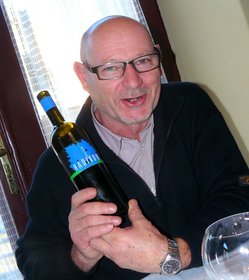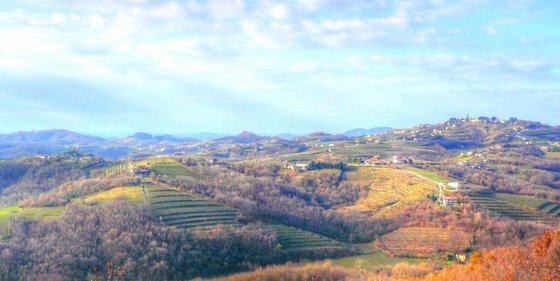GORIZIA, ITALY--From the top of Mount Sabatino, a 2,000-foot land mass that straddles the border between Italy and Slovenia and dominates the Isonzo valley, you look down on the verdant hills and vineyards of Collio as if you were in a hot-air balloon. To the north and east, the snowy Alps seem close enough to touch, to the south, at the end of the valley, lies the Adriatic. Except for cheerful parties of hikers and picnickers, all is tranquil.
Yet Sabatino was the site of the fiercest fighting in World War I, the subject of Hemingway's "Farewell to Arms." The conflict cost the lives of 120,000 Italian and Austro-Hungarian soldiers and left half a million combatants permatently maimed. Every house and tree was destroyed; yet, after two years of bloodshed, the battle lines remained essentially unchnaged..
After the war the Italians built an imposing ossuarium to house the anonymous remains of 60,000 soldiers in Oslavia, a village on the outskirts of Gorizia, but the name Oslavia today is known primarily for its wine. This particular corner of Collio is devoted to ribolla gialla, a thick-skinned white grape, full of flavor and tannin, that the local producers treat like a red.
 And ribolla gialla appreciates the repect it gets from these growers. What grape wouldn't enjoy growing in an ancient vineyard of marl and sandstone? Or a 45-day fermentation in open-topped wooden vats surrounded by carefully nurtured native years, or the luxury of two months of skin contact? It's like a spa treatment for wine.
And ribolla gialla appreciates the repect it gets from these growers. What grape wouldn't enjoy growing in an ancient vineyard of marl and sandstone? Or a 45-day fermentation in open-topped wooden vats surrounded by carefully nurtured native years, or the luxury of two months of skin contact? It's like a spa treatment for wine.
Stanislas ("Stanko") Radikon and his son, Sasha, produce 30,000 bottles a year from their 30-acre vineyard, and explain that the long fermentation and skin contact early-on means less manipulation is needed later; the spa treatment keeps the wine young. Stanko poured a 2000 ribolla at lunch today that tasted rich and youthful and showed not a trace of oxidation. Had it been a red, the press would have swooned. Whites, especially older whites, get much less respect from the outside world. Fortunately, the wine growers of Collio, and especially Oslavia, know better.

Leave a comment